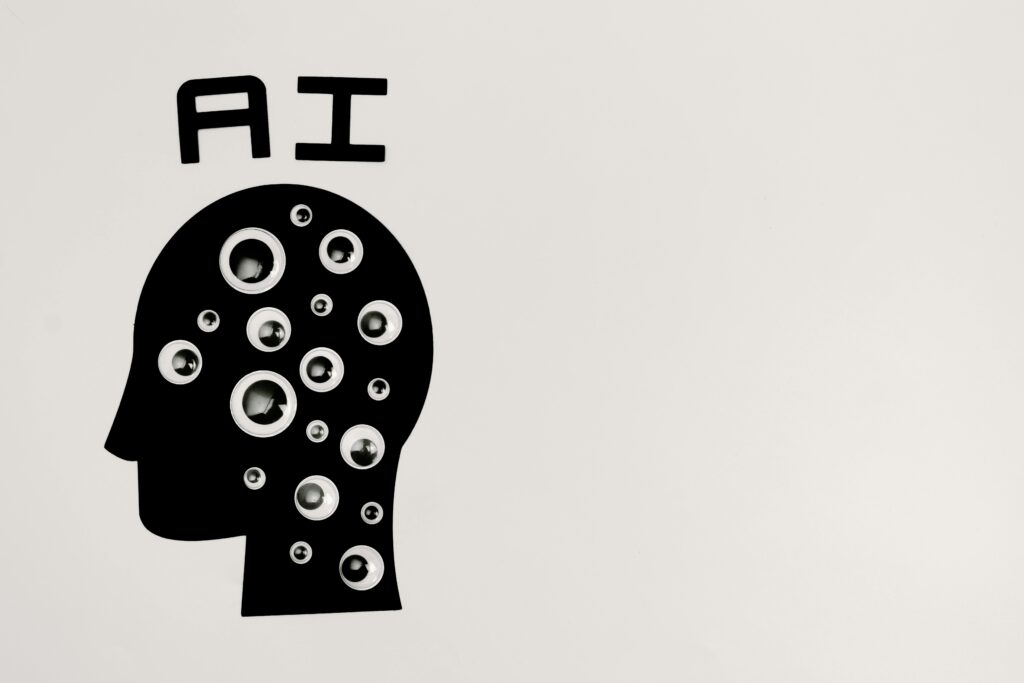Published On: August 19th 2025
Authored by: Jahnavi Srivastava
IMS Law College, Noida, CCSU
ABSTRACT
Cyberbullying is a serious concern in India, as we can all witness the increasing use of digital platforms and social media in today’s time phase. Cyberbullying is spreading widely on a large platform which basically involves sending, posting or sharing hurtful, false mean text about someone online.
This kind of severe act towards someone has a long-lasting effect on a person’s mental health and on their well-being. We are currently living in the 21st century where we are becoming increasingly advanced and technology oriented.
However, advanced technology is also being misused for fraudulent activities[1], bullying, cheating etc. We need vigorous and strict regulations and effective management to handle all these situations. It is also essential to raise awareness among all citizens towards cyberbullying as well as make them all educated on legal remedies and their proper utilization in these such matters.
INTRODUCTION
To begin with, we all must understand what cyberbullying means. So generally, bullying means the repetitive, intentional hurting by taunting and spreading rumors about someone publicly. When all these activities are carried out through digital platforms to harass, humiliate and intimidate others, it is classified as cyberbullying.
Cyberbullying occurs through social media, messaging apps, gaming platforms, and many other digital platforms. Cyberbullying is significantly increasing these days because younger generation youths just increased the use of social media. Mostly these youths are using social media platforms to follow and participate in the ongoing trends.
The trend of using the social media platform for making snapchat, reels on Instagram, various videos on you tube etc. The youth of today’s generation trying to do show off by participating in risky trends and it seems to be modern by using and following the trend on social media platform to them.
The young people must take care of all these matters because the effect of cyber bullying is initially getting more dangerous day by day. We all need to focus on this side as it creates severe effects on a person’s mental health and on their well-being. It generally increases anxiety and depression as well as increases the risk of self-harm and suicidal thoughts, including post-traumatic stress disorder (PTSD).
It is therefore very essential to take cyberbullying seriously and ensure proper support as well as legal remedies available to those affected.
VARIOUS WAYS OF CYBERBULLYING
There are several ways in which individuals engage in cyberbullying by using digital platforms. They commonly include the following:
- Cyberstalking[2]: This mainly involves monitoring and tracking someone online and keeping regular check on their all activities. This is generally done by digital technologies which rely on social media, emails, and other online platforms.
- Cyber harassment: Cyberbullying includes harassment using means of technology. It follows the pattern of threatening someone for violence any kind of harm as well as it also includes the threats of any property damages also. There may be some unwelcomed sexually charged messages which may be treated as a sexual harassment[3].
- Defamation[4]: This is the act of harming and making down someone’s reputation in society by using false statements in slander or libel forms. It keeps leading to loss of reputation, respect and negative feelings towards them in society. It basically involves untrue statements regarding someone intentionally.
- Theft of identity: It is a process of identity theft by using means of someone’s name or any kind photos on social media platform without any kind of permission of the person. By using photos, some personal information or name fraudulently they use to threaten the person for any kind of financial gains through the digital platform.
- Doxxing: By using the means of doxxing the person tries to threaten the other person by saying of leaking their personal information on social media page such as leaking their personal photos, chats and many more information. It leads to mental as well as physical harm also to the person. These are the act of immorality which is going as in form of cyberbullying in India digitally.
With this there are many more ways of cyberbullying present in India in currently also which have the serious consequences such as mental health issues, emotional distress, some suicidal thoughts as well as physical harms.
ACTION AGAINST CYBERBULLYING
- Block: if it is a case like that someone is continuously sending hurtful unwanted messages, leaving obscene comments and keeps on trolling as well then, the victim can just block that person simply if they don’t want to enter into any legal case.
- Report the matter to the social media platform: the person who may be the victim of the act of cyberbullying in India may also ask their family and friends to just report the person’s id on social media who is doing the act of cyberbullying on social media.
- File a complaint with the cyber cell police: if there is any serious matter regarding the matter of cyberbullying such as someone use to threatening to leak your private photos or some personal information on chats then you can take action by doing complaint against the person to the police immediately in cyber cell because in serious cases “prevention is better than cure”.
THE LEGAL REMEDIES
The victims of cyberbullying in India assist themselves to the various legal remedies present for cyberbullying. The victims can seek legal remedies under various provisions of the Information Technology Act, 2000 and Bhartiya Nyaya Sanhita, 2023. There are some legal provisions which can be used as key legal remedies and that have been discussed briefly below in the article:
- Information Technology Act, 2000:
- Section 66C: this section of Information Technology Act,2000 addresses the misuse of identity of someone fraudulently. The person who used to this type of offense gets the punishment of imprisonment for the period of up to 3 years and fine of up to 1 lakh rupees in India according to our Indian law.
- Section 66D: this section of Information Technology Act, 2000 implies whenever there is a case of cheating done by personation. The person who just do this type of offense usually gets the punishment of imprisonment up to 3 years and fine up to 1 lakh rupees according to Indian law.
- Section 66E: this section of Information Technology Act, 2000 deals in the of violation of privacy of any person and the person who used to do these hurtful and unwanted act gets the punishment of imprisonment up to 3 years or fine up to rupees 2 lakhs in India according to the law.
- Section 67: this section of Information Technology Act, 2000 is used whenever there is a publishing of any kind of obscene material with the punishment of imprisonment of up to 3 years and fine of up to rupees 5 lakhs.
- Bhartiya Nyaya Sanhita 2023
- Section 351(3): this section Bhartiya Nyaya Sanhita (BNS) 2023 is basically applied when there is scenario of any criminal intimidation through any anonymous communication then this sec leads to the punishment of imprisonment up to 2 years.
- Section 352: this section of Bhartiya Nyaya Sanhita 2023 is used in law system whenever there is any kind of insulting the modesty of any woman takes place and the person is getting the punishment of imprisonment up to 3 years with fine.
- Section 356: the section of Bhartiya Nyaya Sanhita 2023 is applied in the case of defamation of any person in the society and there is a punishment of imprisonment up to 2 years or fine or it may go with both in Indian law.
CURRENT DATA OF CYBERBULLYING IN INDIA
The approx. total number of cybercrimes in India is 52,974 in 2021 which arises about 5% from 2020 data[5]. The cybercrime against children in 2022 is 1,823 which arise to +32% from 2021 data of cybercrime in India. The number of cases of pornography and obscene content is 1,171 in year 2022. The present data of cyberstalking and bullying child on social media is reaching the number of cases of 158 in year 2022.[6] The number of other cyber offences against kids is reaching up to 416 and the number of cases of cyberbullying of women (Maharashtra) is reaching to 578.
IMPORTANT CASES
State of Tamil Nadu v Suhas Katti (2004) Cr LJ 2796 (Madras HC) Case No 4680 of 2024 “Suhas Katti was accused of posting an obscene and defamatory messages about a woman on social media.” The court passed the judgement on November 5, 2004, that he was convicted and sentenced to rigorous imprisonment of 2 years and fine under Section 67 of the Information Technology Act, 2000.
Shreya Singhal v Union of India (2015) 5 SCC 1(SC) decided 24 March 2015 “the case challenged the constitutional validity of section 66A of Information Technology Act,2000 as section 66A violated Article 19(1)(a) which is freedom of speech and expression. In the judgement of the case Section 66A declared unconstitutional. The provision curtailed freedom of speech and expression without any reasonable restriction as per Article 19(2). “Mere annoyance or inconvenience cannot be a ground to restrict speech”.
The court observed that: “Mere annoyance or any inconvenience cannot be a ground to restrict any speech”.
CONCLUSION
Cyberbullying represents a significant challenge in the current digital age. There is a huge need for the safety, dignity and mental well-being of all groups of children and teenagers and adults as well. The technological advancement becomes new way for harassment and abuse in India. Cyberbullying becomes a serious threat to individual in digital era. There are various ways present in India for doing cyberbullying as the use of social media platforms are reaching high day by day by the society.
There are some legal frameworks present in India such as Information Technology Act,2000 and Bhartiya Nyaya Sanhita, 2023. There are various guidelines provided by the government of India to save people from these kinds of cyberbullying. There is various action which can be taken by people themselves. But there are many enforcement gaps, lack of awareness and difficulties in tracking and finding the accused.
There are many legal remedies provided to the people of India who are generally using the social media platform at a large discussed above in the article. Strengthening all the legal measures, fostering responsible and promoting digital literacy are very essential to effectively addressing the cyberbullying and it helps to protect victim rights in India.
REFERENCES
- Ministry of Home Affairs, ‘Cyberbullying and Its Sources’ https://cybercrime.gov.in/ accessed 8 July 2025.
- UNICEF, ‘Cyberbullying: What It Is and How to Stop It’ https://www.unicef.org/stories/how-to-stop-cyberbullying accessed 8 July 2025.
- Pink Legal, ‘Laws of Cyber Safety of Women in India: How to Take Action Against Cyberbullying’ https://pinklegal.in/topics/cybersafety/cyber-bullying.html accessed 8 July 2025.
- V Kaur and others, ‘A narrative review of cyberbullying among Indian adolescents’ (2021) National Library of Medicines https://pmc.ncbi.nlm.nih.gov/articles/PMC11376467/ accessed 8 July 2025.
- Rina Kanchan, ‘Cyberbullying in India: A Growing Threat’ (2020) 12(3) Journal of Cyber Law Studies 45.
- Pawan Duggal, Cyberlaw (Universal law) publishing 2019.
[1] Rina Kanchan, ‘Cyberbullying in India: A Growing Threat’ (2020) 12(3) Journal of Cyber Law Studies 45
[2] Cyberstalking: Information Technology Act 2000, s 67; Bhartiya Nyaya Sanhita 2023, s 78(2)
[3] Sexual harassment: Bhartiya Nyaya Sanhita 2023, s 75
[4] Defamation: Indian Penal Code 1860, s 499 (or s 354(5) BNS )
[5] National Crime Records Bureau, Cyber Crimes 2022 (Ministry of Home Affairs 2023 (https://ncrb.gov.in/en/crime-india. ) accessed 5 July 2025.
[6]Ministry of Electronics and Information Technology (MeitY), Cyber Crime Prevention Against Women and Children (CCPWC) Scheme: Annual Report 2022–23 (Government of India 2023)(https://www.meity.gov.in. ) accessed 5 July 2025.




